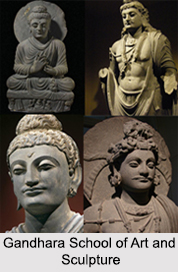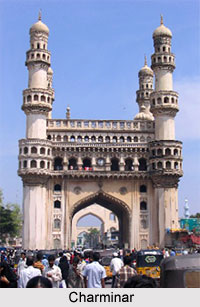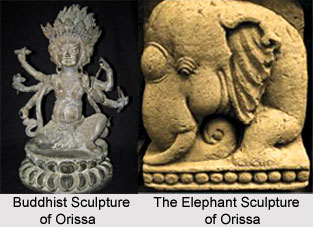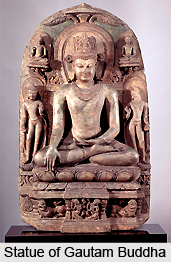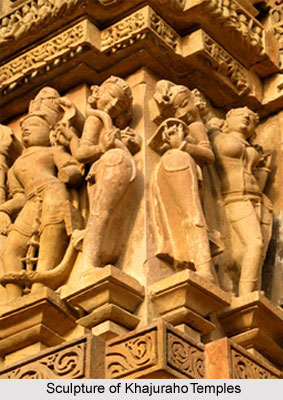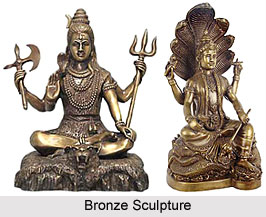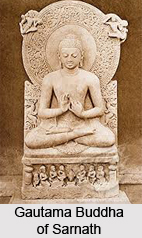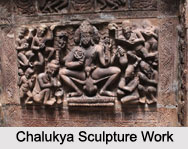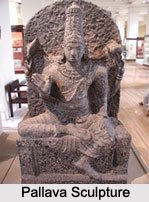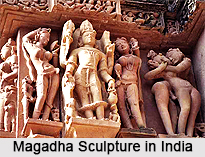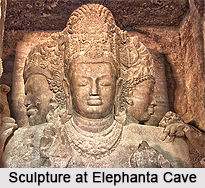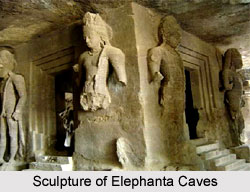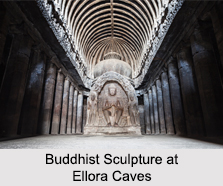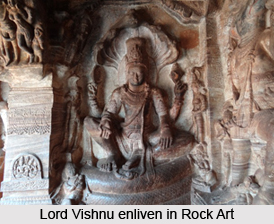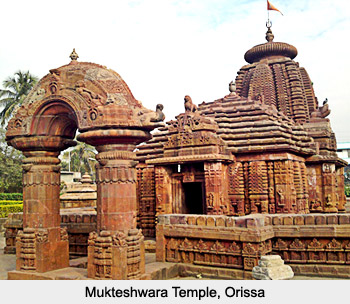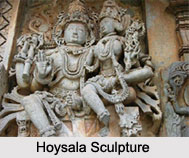 Hoysala sculptures developed from 11th to 14th centuries. This style of architecture was often referred to as an amalgamation between the Dravidian and Indo-Aryan forms. Hoysala sculpture comprise of intricate stone work and several relief work. The predominant motifs found on the temple walls include the deities of gods and goddesses and animals. Thick foliage sculptures are also present on these temples. The ceilings of the mandapas are designed with prolific sculptures. The huge gateways are decorated with well carved sculptures.
Hoysala sculptures developed from 11th to 14th centuries. This style of architecture was often referred to as an amalgamation between the Dravidian and Indo-Aryan forms. Hoysala sculpture comprise of intricate stone work and several relief work. The predominant motifs found on the temple walls include the deities of gods and goddesses and animals. Thick foliage sculptures are also present on these temples. The ceilings of the mandapas are designed with prolific sculptures. The huge gateways are decorated with well carved sculptures.
History of Hoysala Sculpture
Early in the history of Hoysala Empire, the centre of their emerging authority was shifted from the hills of Western Ghats to Belur. With time, their wealth began to flourish and in a few decades they attained the position of an authoritative feudatory under Western Chalukyan Emperors.
A general structure of Hoysala sculpture Salabhanjika is an older Indian tradition going back to Buddhist sculpture. The sculptural achievements of the Hoysala style far outweigh its architectural grandeur. This was possibly due to the malleability of the material chosen by them. Many layers of carvings, one above the other succeed in creating an impression of height. Elephants, horse riders, creepers, lions, anecdotes selected from mythology, history constitute the first five layers of these carvings. Mythological themes are carved at the eye level. Mythical animals and swans are carved in the sixth and seventh levels.
Features of the Hoysala sculptures
Hoysala artists are famous for their consideration in sculptural aspects be it in the portrayal of themes from the Hindu epics and deities or in their apply of motifs such as yalli, kirtimukha, aedicula on pilaster, makara, birds, spiral foliage, animals such as lions, elephants and horses, and even common aspects of daily life such as hair styles in trend.
Erotica was a theme for the Hoysala artist who handled with carefulness. There is no showing in this and erotic themes were engraved into niches and places, usually small in form, making them subtle. These erotic representations are connected with the Shakta tradition. One of the main features of Hoysala architecture and sculptures is the mandapa, a common feature of Hoysala architecture. It is the prayer hall that is entered through an intricately designed lintel. The pillar images known as `sthamba buttalikas` show the influence of the Chola art and architecture. For instance the image of Mohini is a glaring example of the Chola art. The panels on the walls have life themes like musicians, animals, dancers and instrumentalists. Moreover the temple walls of the Hoysala Empire are speckled with events from Hindu epics, Ramayana and Mahabharata. These events have been etched out on the stone walls.
Different Works of the Hoysala sculptures
Belur and Halebidu jointly include some of the supreme surviving temples from Hoysala period. The twin cities of Belur and Halebidu were once the crown jewels of Hoysala Empire. The following are the main works of the Hoysala sculptures:
Belur: Chennakesava Temple Complex is a temple with one shrine. The entire temple, built on a magnificent extent which follows the common pattern of Hoysala architecture. It has an east-west direction set on a jagati. The hall has 60 bays and a shrine measuring 10 m on each side. Under the eave cornice of mandapa there are 38 most brilliantly sculpted figures called salabhanjika or madanika. Viranarayan Temple is built by following the central model of a garbha griha and an antarala opening up to the mandapa, all built on jagati. Vasudev Tirtha was created to the northwest of Chennakesava by Veer Ballala II is a steady feature of any temple in which devotees do an ablation before entering the mandapa.
Halebidu: At first Halebidu was called as Dwarasamudra which refers to a big water tank which was unearthed almost three-quarters of a century before the city being selected as the capital of the Hoysala Empire. In this dvikuta Shaiva temple there are two garbha grihas found connected by a mandapa which is forming a large open hall. One shrine is dedicated to King Vishnuvardhan and the other to his Queen Shantala. There are four entrances to the double temple with small vimanas flanking them on each side. Kalyani Tank was built for a Shaiva temple during the reign of king Narasimha I.
Jain Temples in Bastihalli are dedicated to Jain tirthankars Adinath, Parsvanath and Shantinatha. Each temple preserves an image of the particular tirthankar in their garbha griha.




